Digs & Discoveries
Bronze Age Keepsakes
By BENJAMIN LEONARD
Friday, October 09, 2020

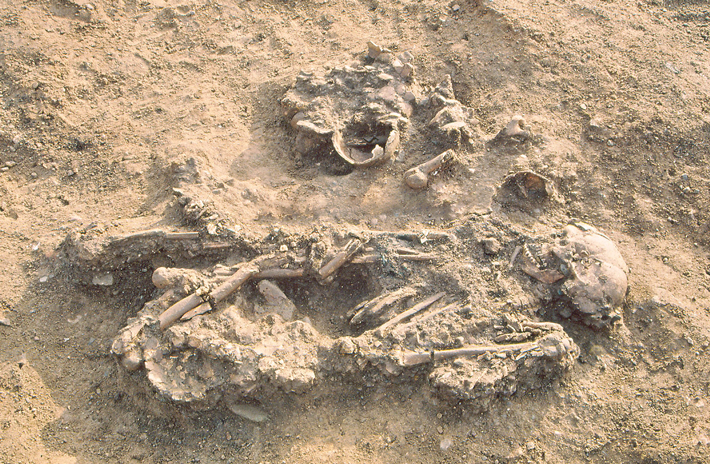 Bronze Age Britons seem to have collected and kept as relics the bones of people they’d lost. The macabre keepsakes included skulls and long bones as well as bits of cremated bones. Archaeologists Thomas Booth of the Francis Crick Institute and Joanna Brück of University College Dublin radiocarbon dated some of these relics that were found in settlements or in graves, where they had been intentionally placed along with skeletons buried between 4,500 and 2,600 years ago. By comparing the age of the bone relics with that of the skeletons in the associated burials or other dateable organic material, the researchers determined that the redeposited bones belonged to individuals who had lived within memory of the deceased. “The retention of human remains was a very broad practice and it encompassed lots of different kinds of relationships,” says Booth. “This included family members and social kin, but also enemies and people who had particular skills one wanted to take advantage of.” Some skulls were damaged after death, he says, perhaps suggesting that they were the remains of captives, while others were perforated and may have been hung on display in homes. Still other types of bones were fashioned into useful objects. These include a human femur that was carved into a musical instrument and buried with a man, tying him to the previously deceased individual’s identity, occupation, or deeds in life.
Bronze Age Britons seem to have collected and kept as relics the bones of people they’d lost. The macabre keepsakes included skulls and long bones as well as bits of cremated bones. Archaeologists Thomas Booth of the Francis Crick Institute and Joanna Brück of University College Dublin radiocarbon dated some of these relics that were found in settlements or in graves, where they had been intentionally placed along with skeletons buried between 4,500 and 2,600 years ago. By comparing the age of the bone relics with that of the skeletons in the associated burials or other dateable organic material, the researchers determined that the redeposited bones belonged to individuals who had lived within memory of the deceased. “The retention of human remains was a very broad practice and it encompassed lots of different kinds of relationships,” says Booth. “This included family members and social kin, but also enemies and people who had particular skills one wanted to take advantage of.” Some skulls were damaged after death, he says, perhaps suggesting that they were the remains of captives, while others were perforated and may have been hung on display in homes. Still other types of bones were fashioned into useful objects. These include a human femur that was carved into a musical instrument and buried with a man, tying him to the previously deceased individual’s identity, occupation, or deeds in life.
To Reach the Gods
By BENJAMIN LEONARD
Friday, October 09, 2020
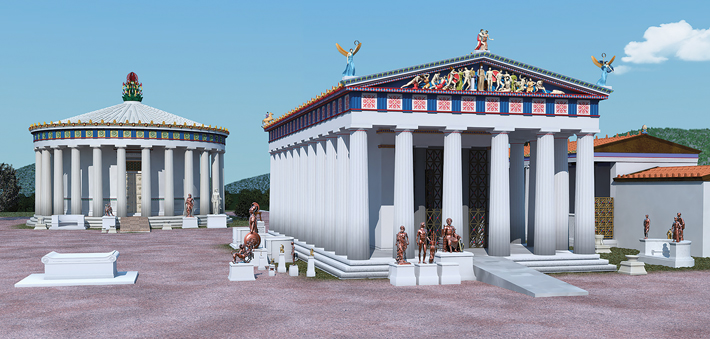
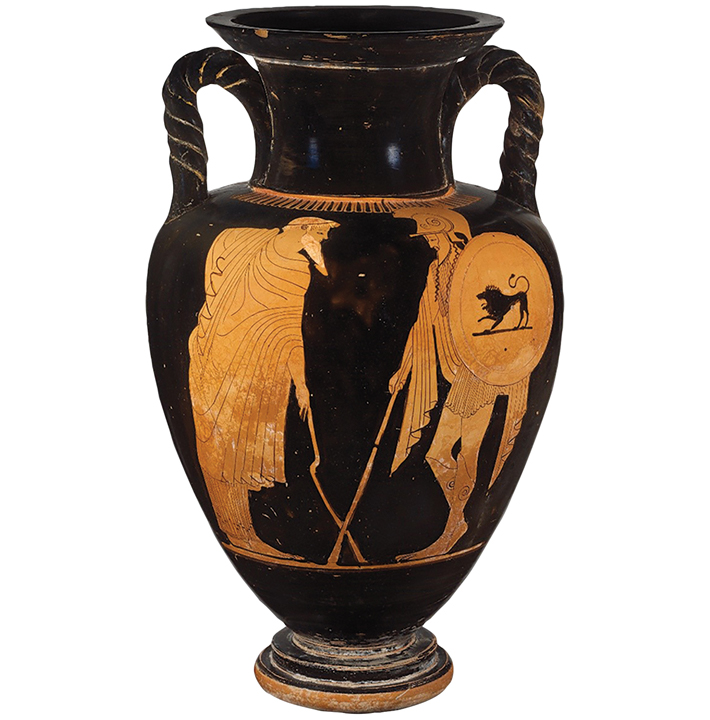 Ancient visitors to the sanctuary of Asclepius at Epidaurus in the northeastern Peloponnese traveled from all across Greece to be healed by the god. Many of these pilgrims are described in inscriptions as walking with canes and crutches or being carried on litters or wagons. By the fourth century B.C., the sanctuary had been equipped with at least 11 stone ramps that provided access to a number of its raised temples and other public spaces. Archaeologist Debby Sneed of California State University, Long Beach, has found that such ramps were installed much more frequently at sanctuaries associated with healing, and contends that the ramps were purposely built to serve these sanctuaries’ mobility-impaired visitors. In contrast to today’s disability accommodations, however, ancient Greek architects’ design choices were not motivated by progressive social reforms, but by the desire to ensure the continued success of healing sanctuaries. “It was a very practical decision for the Greeks to make sanctuaries accessible,” Sneed says. “Since their clientele was impaired, they needed infrastructure to enable these visitors to use all the spaces.”
Ancient visitors to the sanctuary of Asclepius at Epidaurus in the northeastern Peloponnese traveled from all across Greece to be healed by the god. Many of these pilgrims are described in inscriptions as walking with canes and crutches or being carried on litters or wagons. By the fourth century B.C., the sanctuary had been equipped with at least 11 stone ramps that provided access to a number of its raised temples and other public spaces. Archaeologist Debby Sneed of California State University, Long Beach, has found that such ramps were installed much more frequently at sanctuaries associated with healing, and contends that the ramps were purposely built to serve these sanctuaries’ mobility-impaired visitors. In contrast to today’s disability accommodations, however, ancient Greek architects’ design choices were not motivated by progressive social reforms, but by the desire to ensure the continued success of healing sanctuaries. “It was a very practical decision for the Greeks to make sanctuaries accessible,” Sneed says. “Since their clientele was impaired, they needed infrastructure to enable these visitors to use all the spaces.”
Ship of Plenty
By DANIEL WEISS
Friday, October 09, 2020
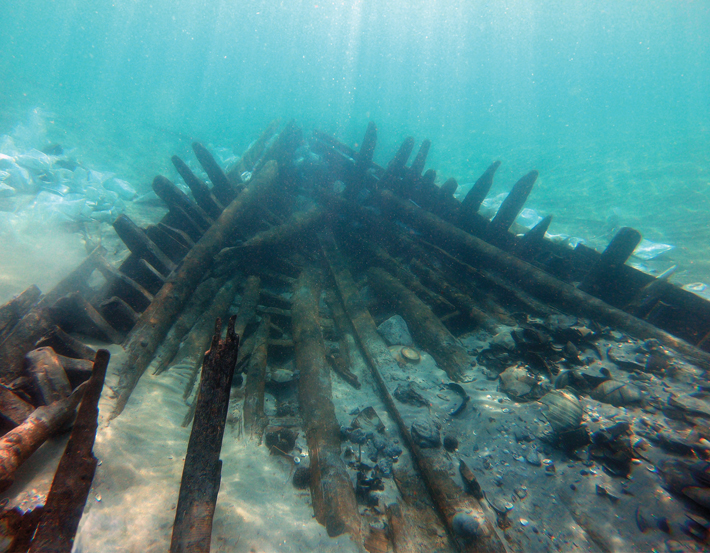
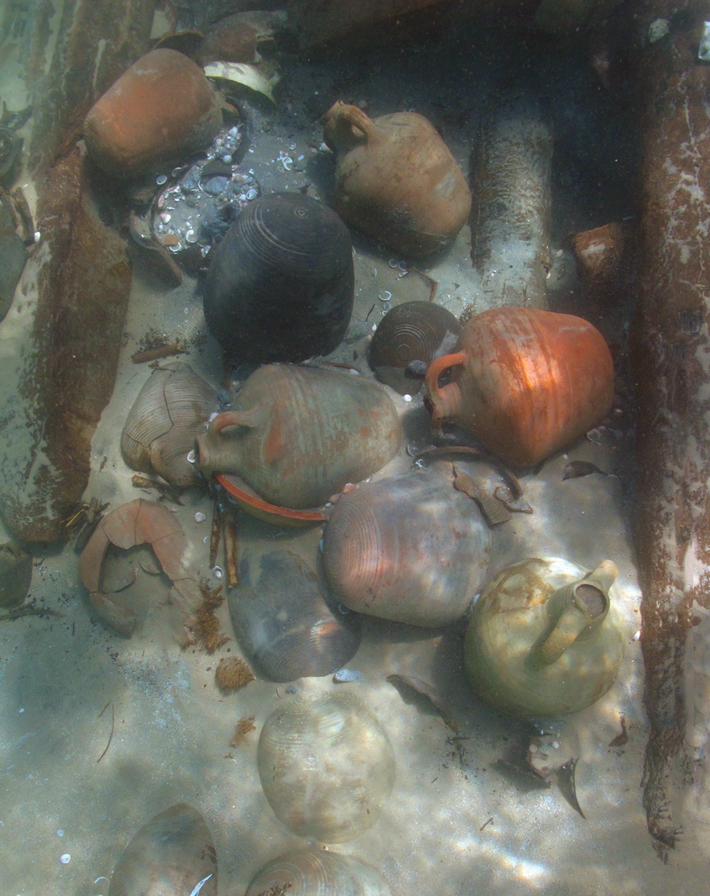 A well-preserved shipwreck lying in shallow water just a few hundred feet off the coast of Israel is providing new evidence of what life was like in the region when it sank, between the mid-seventh and mid-eighth century A.D. Volunteer student divers, who are part of a team led by archaeologist Deborah Cvikel of the University of Haifa, discovered almost 200 amphoras containing commodities such as olives, dates, fish, pine nuts, grapes, and raisins. This breadth of goods is surprising, as it has generally been thought that trade in the region declined greatly after the transition from Byzantine to Islamic rule in the mid-seventh century. “Here we have a large ship with cargo from all over the area,” says Cvikel. “I think we have proved that there was some large-scale maritime commerce at the time.”
A well-preserved shipwreck lying in shallow water just a few hundred feet off the coast of Israel is providing new evidence of what life was like in the region when it sank, between the mid-seventh and mid-eighth century A.D. Volunteer student divers, who are part of a team led by archaeologist Deborah Cvikel of the University of Haifa, discovered almost 200 amphoras containing commodities such as olives, dates, fish, pine nuts, grapes, and raisins. This breadth of goods is surprising, as it has generally been thought that trade in the region declined greatly after the transition from Byzantine to Islamic rule in the mid-seventh century. “Here we have a large ship with cargo from all over the area,” says Cvikel. “I think we have proved that there was some large-scale maritime commerce at the time.”
The team has also found indications that the ship’s crew may have included members of different faiths. Some of the amphoras bear Islamic benedictions, while others are painted with crosses, and the word “Allah” in Arabic was found burned into the ship’s wood. Says Cvikel, “Now we are wondering, Was the crew a mixture of Christians and Muslims?”
A Tale of Two Pipes
By BENJAMIN LEONARD
Friday, October 09, 2020
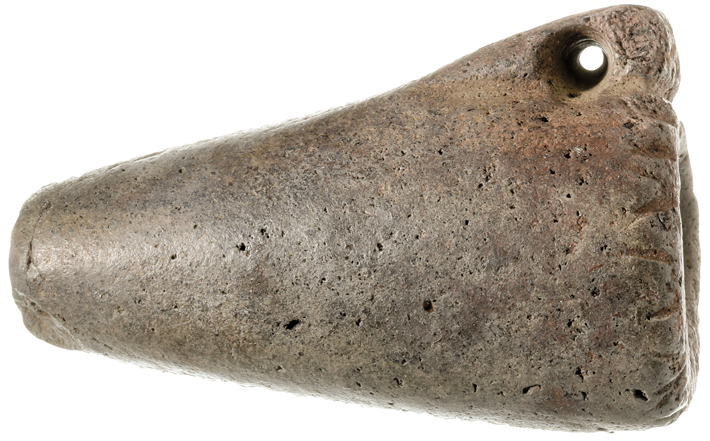
 Two pipes unearthed at Indigenous sites in central and southeastern Washington—one dating to before contact with Europeans, and the other used after their arrival in the 1700s—have revealed the changing smoking habits of Native Americans in the Pacific Northwest. An interdisciplinary team of researchers from Washington State University pioneered a process called ancient residue metabolomics, which has allowed them to extract multiple compounds from the pipes’ surfaces and interiors and to identify plants used for smoking.
Two pipes unearthed at Indigenous sites in central and southeastern Washington—one dating to before contact with Europeans, and the other used after their arrival in the 1700s—have revealed the changing smoking habits of Native Americans in the Pacific Northwest. An interdisciplinary team of researchers from Washington State University pioneered a process called ancient residue metabolomics, which has allowed them to extract multiple compounds from the pipes’ surfaces and interiors and to identify plants used for smoking.
In the precontact pipe, they detected the presence of smooth sumac (Rhus glabra), which smokers likely added to tobacco to improve its flavor and to take advantage of the plant’s medicinal properties. This pipe, which was made of stone, also contains traces of Nicotiana quadrivalvis, a species of tobacco that was once cultivated locally by Native tribes. The post-contact pipe, which was made of clay and discarded in the late eighteenth century, is of a type introduced by Europeans and quickly adopted by Native Americans. The pipe contains Nicotiana rustica, a more potent tobacco species of South American origin that was grown by tribes in the eastern United States. Its presence in the pipe helps establish that it was co-opted by Europeans for use in their trade tobacco. “The presence of rustica in the post-contact pipe confirms that indigenous tobacco was an important trade commodity after contact,” says Washington State University archaeologist Shannon Tushingham. This suggests that smoke plants cultivated by Native people continued to be used alongside tobacco domesticated by Europeans .
Precision Instruments
By ERIC A. POWELL
Friday, October 09, 2020
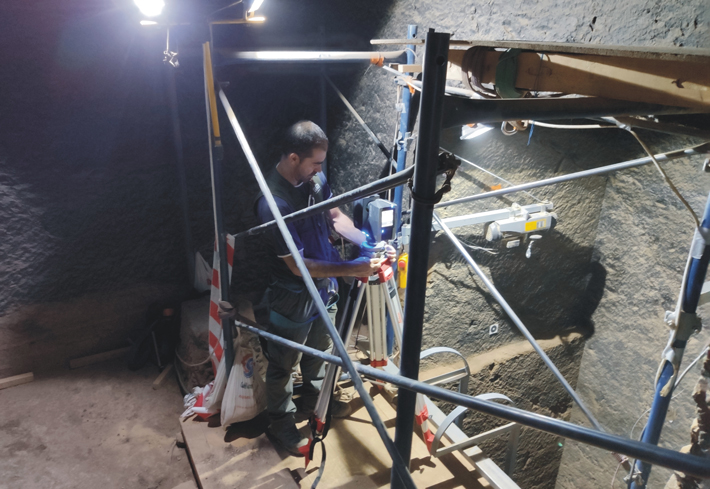
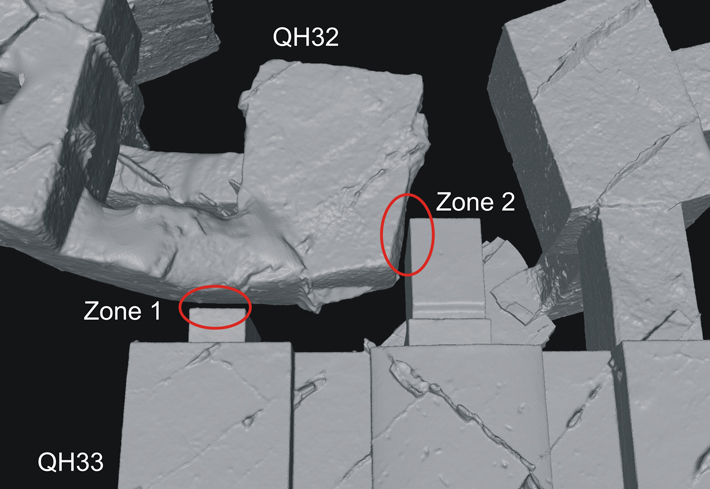 A recent study of the necropolis of Qubbet el-Hawa in Aswan has revealed that ancient Egyptian engineers possessed an uncanny sense of space. A team led by University of Jaen cartographer Antonio Mozas-Calvache used laser scanning and photogrammetry to create 3-D models of three tombs at the necropolis that were cut into the same rock face during the 12th Dynasty (ca. 1981–1802 B.C.). The entrances to the large tombs—which were built for local governors and their families—were separated by about 65 feet. But the models showed that the interiors of the complexes were so close together that two of the tombs were separated by only four inches in two places. “Initially, we didn’t believe these results,” says Mozas-Calvache. “We supposed that both tombs were close, but not so close.” After rechecking their data, the researchers determined that the tombs were indeed constructed to within just one hand width apart. Click on the video below to see 3-D models of the tombs.
A recent study of the necropolis of Qubbet el-Hawa in Aswan has revealed that ancient Egyptian engineers possessed an uncanny sense of space. A team led by University of Jaen cartographer Antonio Mozas-Calvache used laser scanning and photogrammetry to create 3-D models of three tombs at the necropolis that were cut into the same rock face during the 12th Dynasty (ca. 1981–1802 B.C.). The entrances to the large tombs—which were built for local governors and their families—were separated by about 65 feet. But the models showed that the interiors of the complexes were so close together that two of the tombs were separated by only four inches in two places. “Initially, we didn’t believe these results,” says Mozas-Calvache. “We supposed that both tombs were close, but not so close.” After rechecking their data, the researchers determined that the tombs were indeed constructed to within just one hand width apart. Click on the video below to see 3-D models of the tombs.
Advertisement
Advertisement
IN THIS ISSUE
Digs & Discoveries
Our Coastal Origins
Off the Grid
A Day by the Rhone
Painful Past
Miniature Masterpieces
Precision Instruments
Ship of Plenty
A Tale of Two Pipes
To Reach the Gods
Bronze Age Keepsakes
Honoring the Dead
Paleolithic Bedtime
Laurens' Last Stand
Piggy Playthings
What's in a Norse Name?
Around the World
Poison projectiles, Cortés’ Mexico City abode, Peruvian pelican fertilizer, and solving a Crusader mystery
Artifact
Turning over an old leaf
Advertisement

Recent Issues
-
 May/June 2024
May/June 2024
-
 March/April 2024
March/April 2024
-
 January/February 2024
January/February 2024
-
 November/December 2023
November/December 2023
-
 September/October 2023
September/October 2023
-
 July/August 2023
July/August 2023
-
 May/June 2023
May/June 2023
-
 March/April 2023
March/April 2023
-
 January/February 2023
January/February 2023
-
 November/December 2022
November/December 2022
-
 September/October 2022
September/October 2022
-
 July/August 2022
July/August 2022
-
 May/June 2022
May/June 2022
-
 March/April 2022
March/April 2022
-
 January/February 2022
January/February 2022
-
 November/December 2021
November/December 2021
-
 September/October 2021
September/October 2021
-
 July/August 2021
July/August 2021
-
 May/June 2021
May/June 2021
-
 March/April 2021
March/April 2021
-
 January/February 2021
January/February 2021
-
 November/December 2020
November/December 2020
-
 September/October 2020
September/October 2020
-
 July/August 2020
July/August 2020
-
 May/June 2020
May/June 2020
-
 March/April 2020
March/April 2020
-
 January/February 2020
January/February 2020
-
 November/December 2019
November/December 2019
-
 September/October 2019
September/October 2019
-
 July/August 2019
July/August 2019
-
 May/June 2019
May/June 2019
-
 March/April 2019
March/April 2019
-
 January/February 2019
January/February 2019
-
 November/December 2018
November/December 2018
-
 September/October 2018
September/October 2018
-
 July/August 2018
July/August 2018
-
 May/June 2018
May/June 2018
-
 March/April 2018
March/April 2018
-
 January/February 2018
January/February 2018
-
 November/December 2017
November/December 2017
-
 September/October 2017
September/October 2017
-
 July/August 2017
July/August 2017
-
 May/June 2017
May/June 2017
-
 March/April 2017
March/April 2017
-
 January/February 2017
January/February 2017
-
 November/December 2016
November/December 2016
-
 September/October 2016
September/October 2016
-
 July/August 2016
July/August 2016
-
 May/June 2016
May/June 2016
-
 March/April 2016
March/April 2016
-
 January/February 2016
January/February 2016
-
 November/December 2015
November/December 2015
-
 September/October 2015
September/October 2015
-
 July/August 2015
July/August 2015
-
 May/June 2015
May/June 2015
-
 March/April 2015
March/April 2015
-
 January/February 2015
January/February 2015
-
 November/December 2014
November/December 2014
-
 September/October 2014
September/October 2014
-
 July/August 2014
July/August 2014
-
 May/June 2014
May/June 2014
-
 March/April 2014
March/April 2014
-
 January/February 2014
January/February 2014
-
 November/December 2013
November/December 2013
-
 September/October 2013
September/October 2013
-
 July/August 2013
July/August 2013
-
 May/June 2013
May/June 2013
-
 March/April 2013
March/April 2013
-
 January/February 2013
January/February 2013
-
 November/December 2012
November/December 2012
-
 September/October 2012
September/October 2012
-
 July/August 2012
July/August 2012
-
 May/June 2012
May/June 2012
-
 March/April 2012
March/April 2012
-
 January/February 2012
January/February 2012
-
 November/December 2011
November/December 2011
-
 September/October 2011
September/October 2011
-
 July/August 2011
July/August 2011
-
 May/June 2011
May/June 2011
-
 March/April 2011
March/April 2011
-
 January/February 2011
January/February 2011
Advertisement






